Two large , parallel conducting plates X and Y , kept close to each other , are given Q1 and Q2(Q1>Q2). The four surfaces of the plates are A,B,C and D , as shown
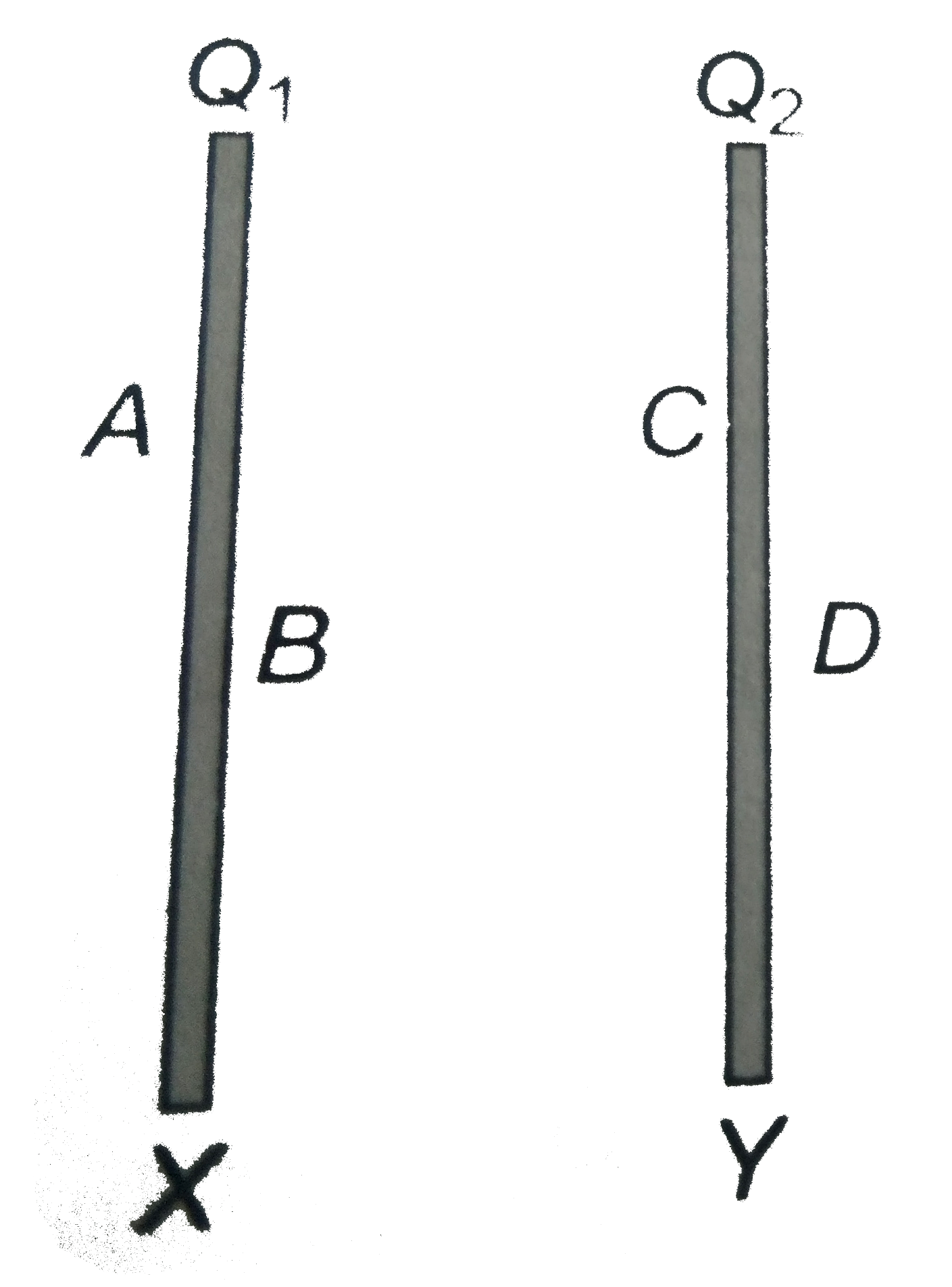
(i) The charge on A is 12(Q1+Q2)
(ii) The charge on B is 12(Q1−Q2)
(iii) The charge on C is 12(Q2−Q1)
(iv) The charge on D is 12(Q1+Q2)
(i),(ii)
(ii),(iii)
(ii),(iv)
All
The correct Answer is:4
The outer surfaces of extreme plates have same charge (total charge/2), facing surfaces have equal and opposite charges.
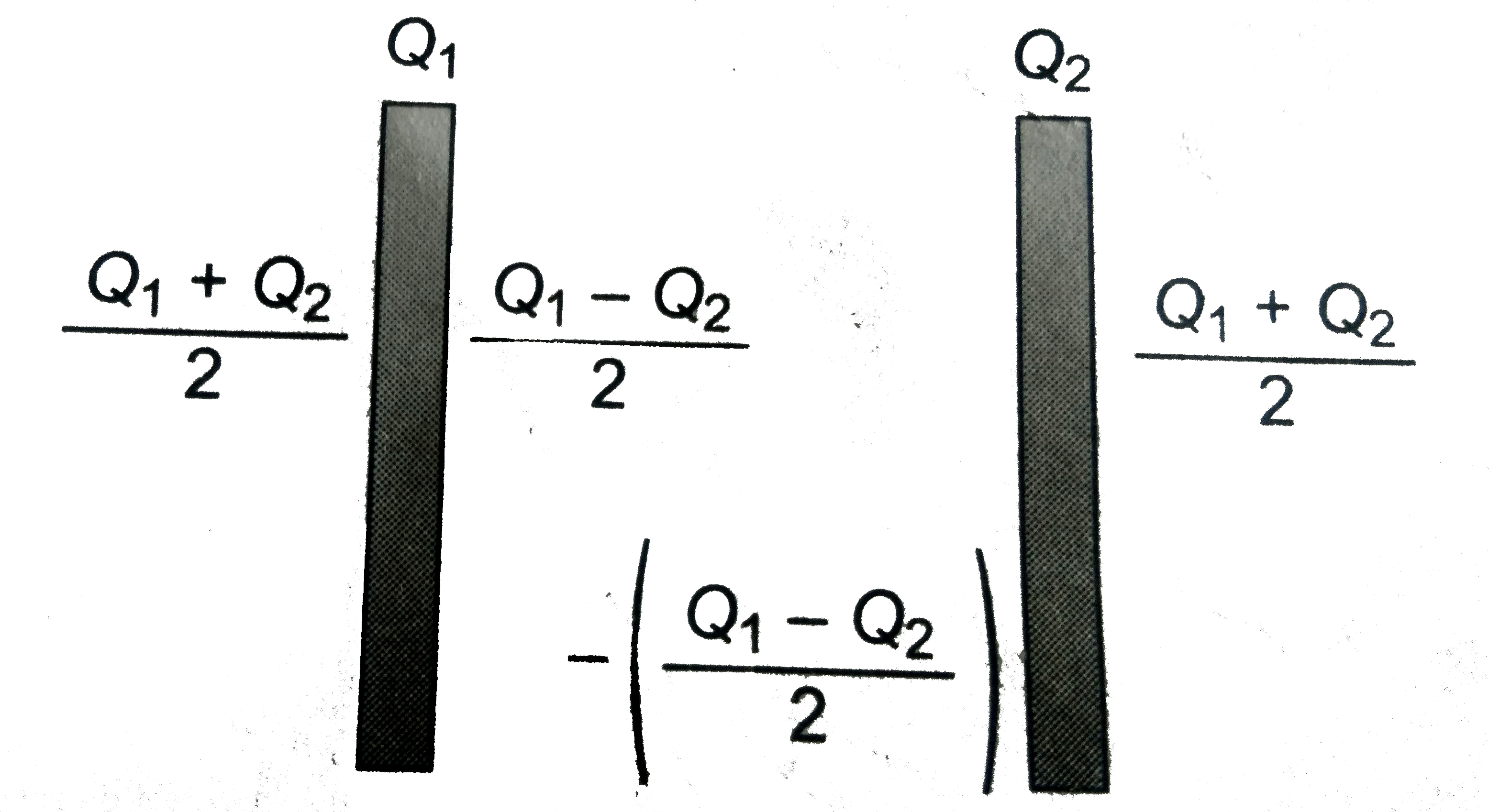
Topper's Solved these Questions
Similar Questions
Two conducting plates A and B are placed parallel to each other. A is given a charge. Q1 and B a charge Q2. Find the distribution of charges on the four surface.
View SolutionTwo conducting plates A and B are placed parallel to each other. A is given a charge Q1 and B a charge Q2. Prove that the charges on the inner surfaces are of equal magnitude and opposite sign.
View Solution
Knowledge Check
- Question 1 - Select One
Charges Q1 and Q2 lie inside and outside respectively of an uncharged conducting shell. Their separation is r.
(i) The force on Q1 is zero
(ii) The force on Q1 is k(Q1Q2r2)
(iii) The force on Q2 is k(Q1Q2r2)
(iv) The force on Q2 is zeroA(i),(iii)B(ii),(iii)C(ii),(iv)D(i),(iii) - Question 2 - Select One
The value of charge q1,q2andq3 as shown in the figure are
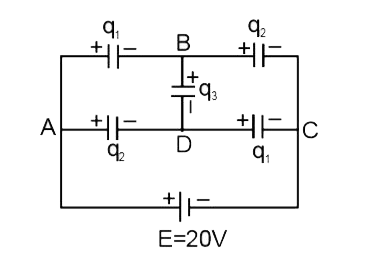 Aq1=32μC,q2=24μC,q3=−8μCBq1=48μc,q2=16μC,q3=+8μCCq1=32μC,q2=24μC,q3=+8μCDq1=3μC,q2=4μC,q3=+2μC
Aq1=32μC,q2=24μC,q3=−8μCBq1=48μc,q2=16μC,q3=+8μCCq1=32μC,q2=24μC,q3=+8μCDq1=3μC,q2=4μC,q3=+2μC - Question 3 - Select One
In an isolated parallel plate capacitor of capacitance C, the plates have charge Q1 and Q2. The potential difference between the plates is
AQ1+Q22CBQ1−Q22CCQ12CD−Q22C
Identify the correct statement about the charges q1 and q2.
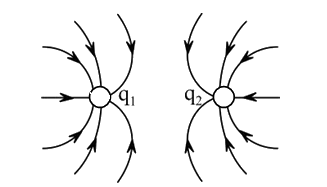 View Solution
View SolutionLooking at the various electric lines of forces between charges Q1 and Q2, find the value of Q1Q2.
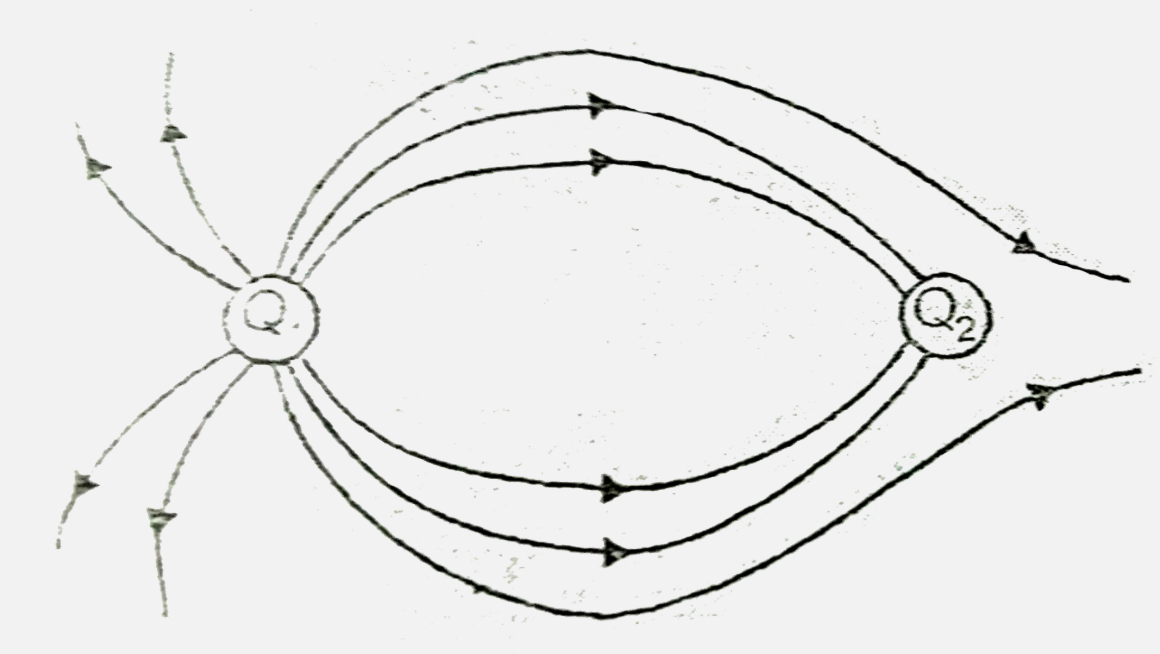 View Solution
View SolutionConsider a parallel plate capaciter having plates of unequal area. When a battery supplies +Q1 and −Q2 charges to two plates.
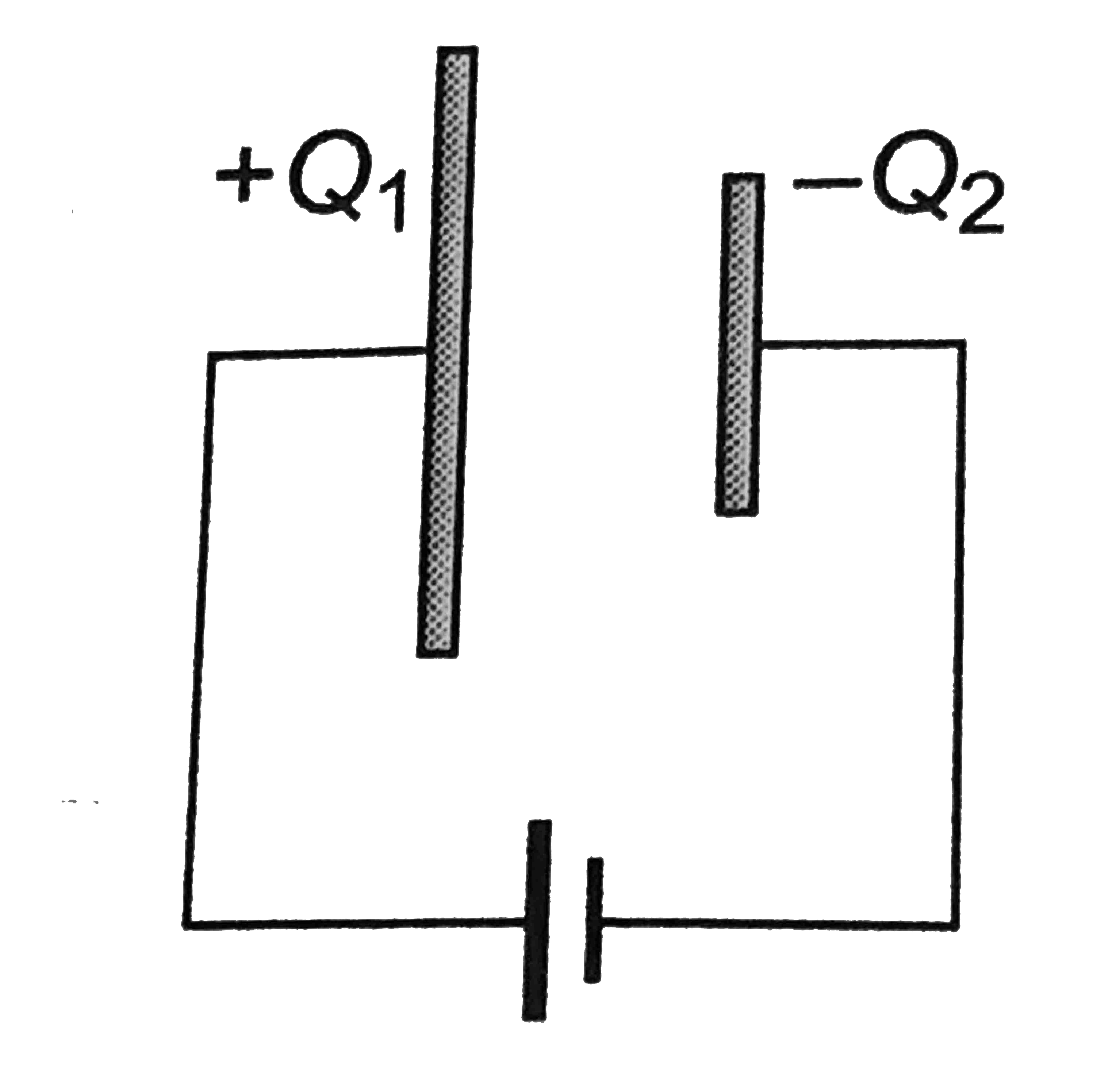 View Solution
View SolutionIn, the charges on C1,C2, and C3, are Q1,Q2, and Q3, respectively.
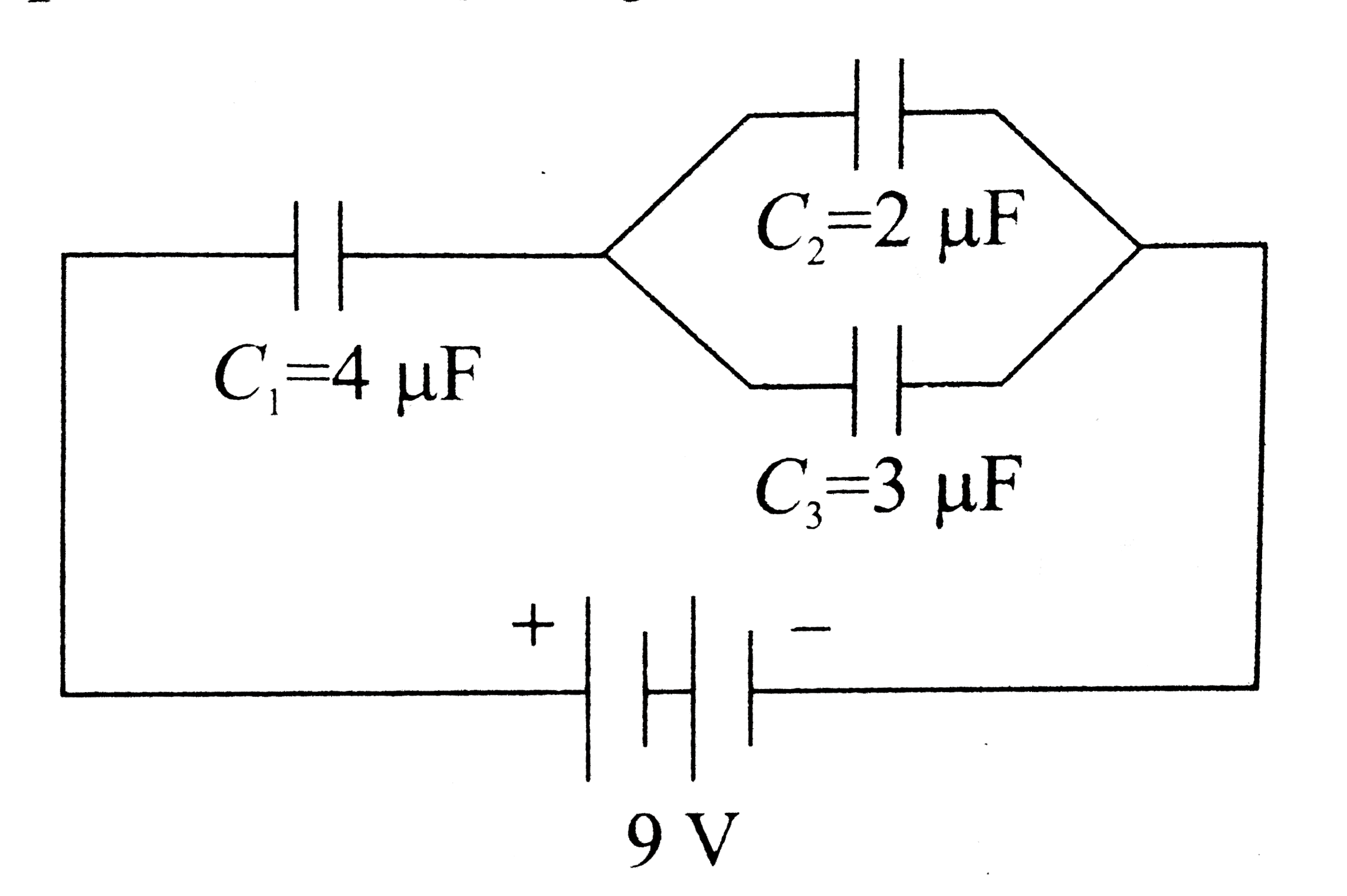 .View Solution
.View SolutionIn an isolated parallel plate capacitor of capacitancee C, the four surface have chrges Q1,Q2,Q−(3) and Q4 as shown. The potential difference between the plates is
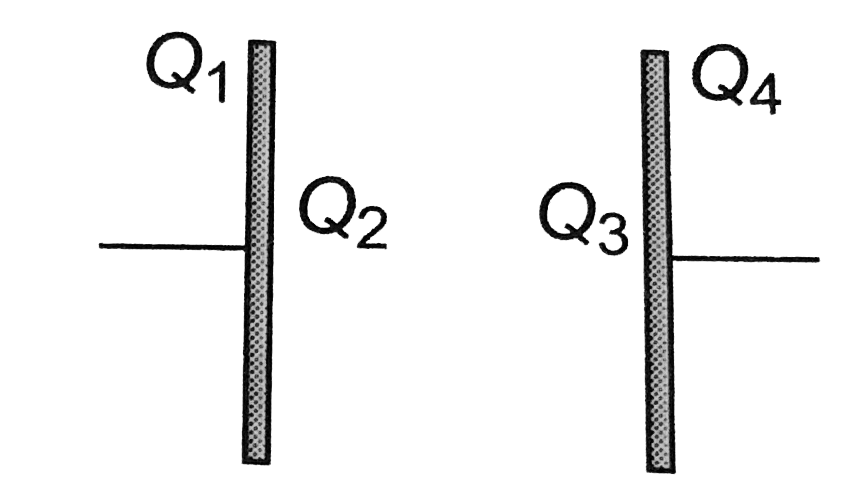 View Solution
View Solution

